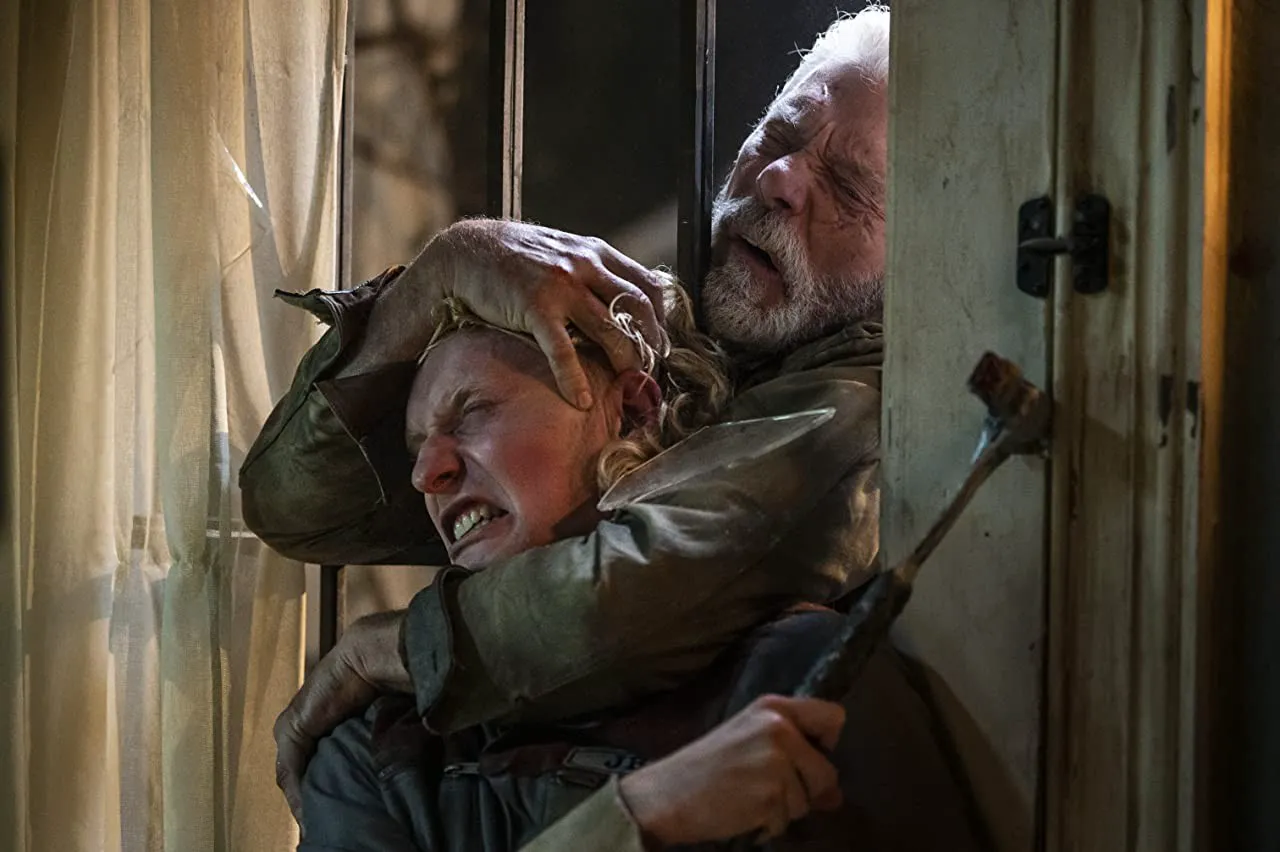“Don’t Breathe 2”: A Sequel That Struggles to Find Its Breath
Five years have passed since the release of “Don’t Breathe,” Federico Alvarez’s taut and compelling thriller. In the original, a group of young robbers seeking easy money break into the home of a blind Iraq War veteran who has received substantial monetary compensation. The old man delivers a brutal and bloody resistance, but the protagonist (Jane Levy) manages to escape with more than just stolen cash. The money becomes the guarantee of her silence, as the old man’s basement held dark secrets of its own. The film was a hit with genre fans and general audiences alike, thanks to its claustrophobic setting, dynamic scenes, and visually intense gore. A sequel was inevitable, but with Rodolfo Sayagues, the screenwriter of the original (who also penned “Evil Dead: Black Book”), taking over as director, the franchise’s potential has unfortunately diminished.
Steven Lang as Norman Nordstrom in a still from “Don’t Breathe 2”
Without having seen the trailer, read the synopsis, or engaged with any other promotional material, the first 15 minutes of “Don’t Breathe 2” are perplexing. Is this a sequel or a prequel? The same old man, seemingly gentler and almost benevolent in his sternness (Steven Lang), is raising a daughter in spartan conditions, teaching her extreme survival techniques and providing her with a month’s worth of homework. Phoenix (Madeline Grace) has no friends, no school, and no knowledge of her mother. Her only companions are her father, a Rottweiler named Shadow, and Hernandez (Stephanie Arcila), a fellow veteran who helps the unconventional family with everyday tasks. The girl’s desire for freedom grows in direct proportion to her father’s suffocating embrace.
Steven Lang as Norman Nordstrom in a still from “Don’t Breathe 2”
The attempt to portray Steven Lang’s character as a victim, showing him as a loving and lonely man, and attributing his unhealthy penchant for violence to PTSD, feels both reckless and ultimately futile. This is why the speculation about a prequel arises: perhaps the change in Norman’s character is meant to show how the gray-haired old man developed his iron armor of detachment and cruelty. Whether this approach would have worked is unknown, as “Don’t Breathe 2” is a direct sequel to the first film, although it differs from the original in both its ideas and style. We won’t reveal the circumstances of the girl’s arrival under his roof, as the main intrigue hinges on a plot twist. However, it’s worth remembering that in Alvarez’s film, Norman Nordstrom held a hostage in his basement and forcibly impregnated her to have a child and avoid loneliness. This act effectively eliminates any possibility of empathy for the character. Sympathy for Phoenix is also difficult to muster. Naturally, another group of bad guys breaks into the house, and a bloodbath ensues. The young Amazon diligently applies all of her father’s military lessons, but actresses like Thomasin McKenzie are rare, and Grace lacks the charisma to overcome all of the directorial shortcomings.

Steven Lang as Norman Nordstrom in a still from “Don’t Breathe 2”
From Claustrophobia to Action: A Shift in Genre
Compared to the first film, where the exposition was clear and effective, “Don’t Breathe 2” aims to complicate the genre’s pulse. It shifts from horror-claustrophobia to action, occasionally dipping into melodrama and flirting with exploitation (but only slightly; there isn’t enough blood and dismembered limbs for a full-fledged invasion of that territory). Initially, the new raid on the veteran’s home seems unjustified, but another twist is in store (Sayagues has three plot twists in just over an hour and a half of runtime), and the motivation seemingly gains meaning. In this battle, Steven Lang’s character becomes immortal and virtually invulnerable, as befits the protagonist of an action film or slasher. The blind old man chops, tortures, and shoots a horde of young men, like a cross between John Wick and Jason. However, this action lacks the genre drive that can overshadow any illogicality and help viewers suspend disbelief. The violence on screen doesn’t reach the culminating point where it transforms into a bloody spectacle. As a result, it’s difficult to ignore the fact that a young girl of about 12 is caught up in ultra-violent showdowns where she is beaten, drowned, and electrocuted, and her father is no better than the bad guys with guns.
Echoes of Fincher and a Missed Opportunity
Following the main principle of sequels—faster, higher, stronger—Sayagues goes beyond the house and expands the geography of the space. At this point, the director’s love for Fincher’s “Fight Club” is strangely revealed: there’s a house on Paper Street and a Marla Singer in a wheelchair. One might assume that this is a hint at a third plot twist—that the girl doesn’t exist and the old man has gone mad. If that were the case, we would likely recommend rushing to see this film as soon as possible. As it stands, we can only advise staying for the post-credits scene, which is just as unnecessary and meaningless as this sequel itself.